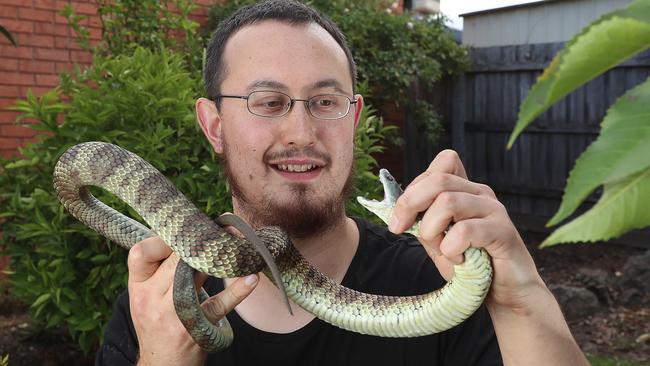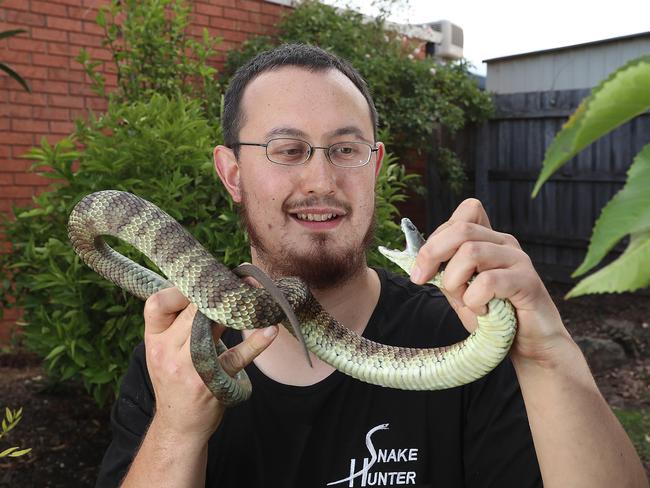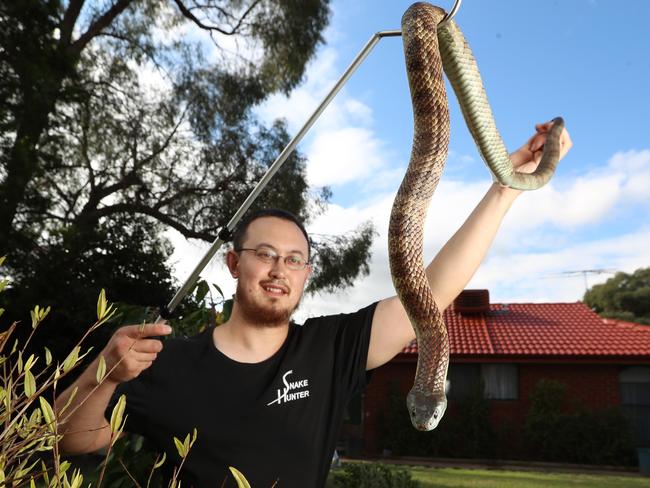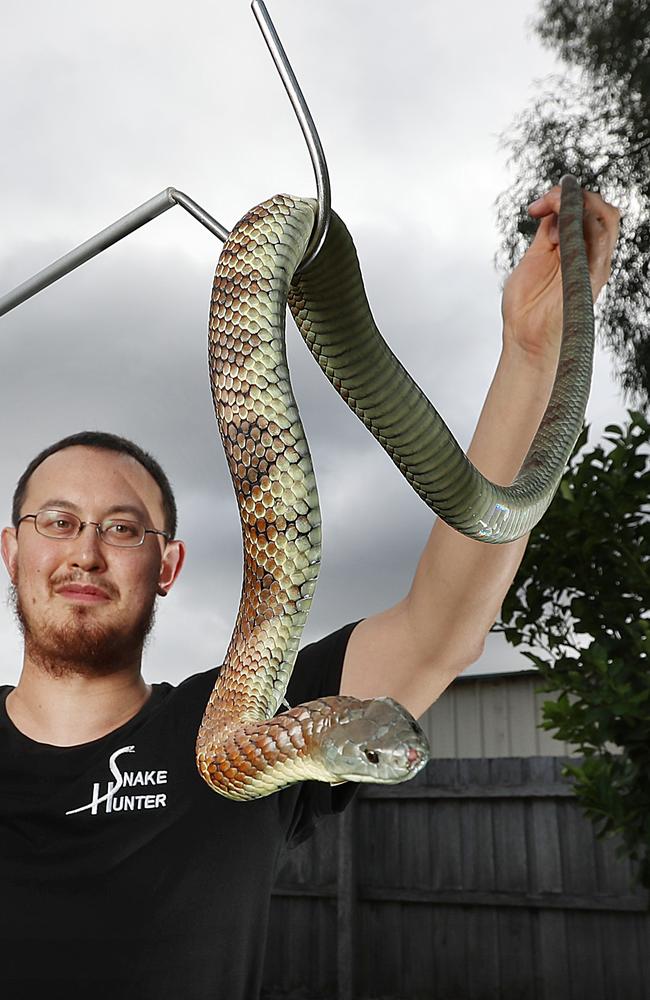Middle-aged men most likely victims of deadly snake bites.
MIDDLE-aged men are the most common victims of killer snakes, with an Australian audit also revealing the most common locations and body parts where fatal bites occur.

News
Don't miss out on the headlines from News . Followed categories will be added to My News.
MIDDLE-aged men are the most common victims of fatal snake bites, the first Australian audit in more than a quarter of a century reveals.
Known for their highly poisonous venom and fast pace, the Brown snake was the biggest killer out of all species studied, causing 23 of the 35 deaths over the 16-year period.
Despite an ever-present fear of encountering a snake in the grass while walking in the bush, the University of Melbourne study found the majority of bites between 2000-2016 occurred in or near the victim’s home.
Most bites occurred on the hand or finger, followed by the foot or ankle.
Around 60 per cent of bites took place after 4pm, data from the National Coronial Information Service showed.

Victims were most likely to collapse or suffer a cardiac arrest with death occurring between one hour to 19 days later.
Dr Ronelle Welton, from the Australian Venom Research Unit, said it was unclear why most victims were males in their 40s, though greater risk-taking behaviour could be the cause.
“People should not attempt to pick up snakes and need to be encourage to practice appropriate first aid and know CPR,” she said.
Each year there are around 550 Australians admitted to hospital after suffering a snake bite.
Melbourne snake sightings increase after unseasonably warm start to autumn
Even though first aid knowledge and access to emergency health care has increased over the past 30 years, the death rate has remained stable.
“This is a very interesting aspect of the findings,” Dr Welton said.
“It is perhaps like moving from a malaria elimination program to a malaria eradication program. “Australia has exceptional health care with ongoing clinical research, management review and best practice for the treatment of snakebite.
“However there has not been much focus on preventative or community needs.”


For instance, Dr Welton said that first aid for snakebite, pressure immobilisation, was officially accepted by the medical fraternity in 1979. But she said it was not known how often it was used or whether it was the most effective measure.
“An effort to co-ordinate the clinical, scientific and community to provide a ‘current state of knowledge’ for all venomous bites and stings would be beneficial,” she said.
She also said it would be worth investigating anecdotal evidence that brown snakes were moving into territories usually occupied by tiger snakes.


